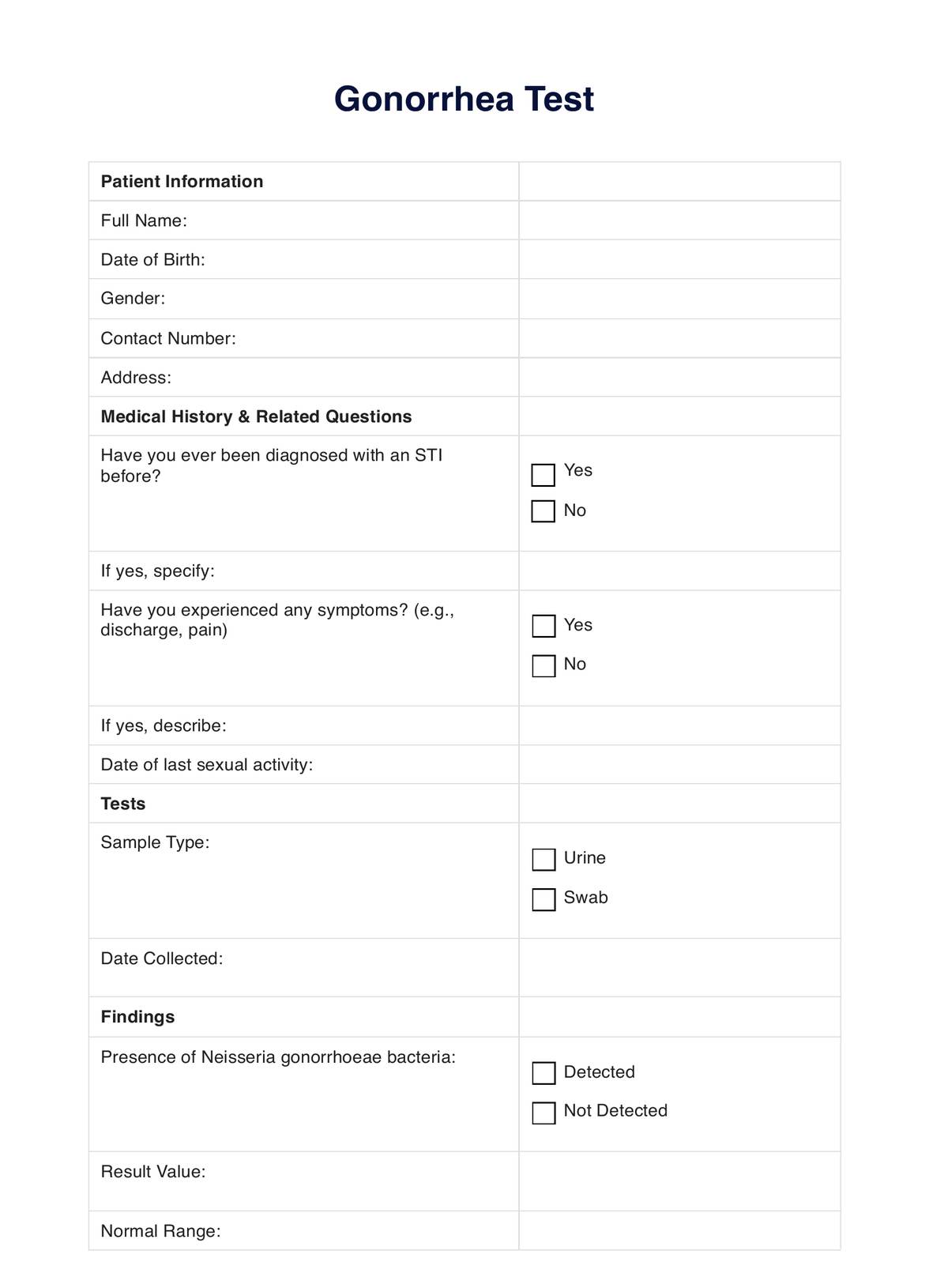Carepatron offers a unique blend of user-friendliness, robust features, and a deep understanding of healthcare needs, ensuring efficiency and excellence in patient care.

Discover the complete guide on the Gonorrhea Test with Carepatron. Get insights, best practices, & a free PDF download. Elevate your healthcare practice today!
Carepatron offers a unique blend of user-friendliness, robust features, and a deep understanding of healthcare needs, ensuring efficiency and excellence in patient care.
Absolutely. Carepatron prioritizes patient confidentiality, ensuring all data is securely stored and accessible only to authorized personnel.
Yes, Carepatron is versatile and can manage various tests and healthcare needs, making it a comprehensive solution for healthcare professionals.
EHR and practice management software
*No credit card required
Free
$0/usd
Unlimited clients
Telehealth
1GB of storage
Client portal text
Automated billing and online payments